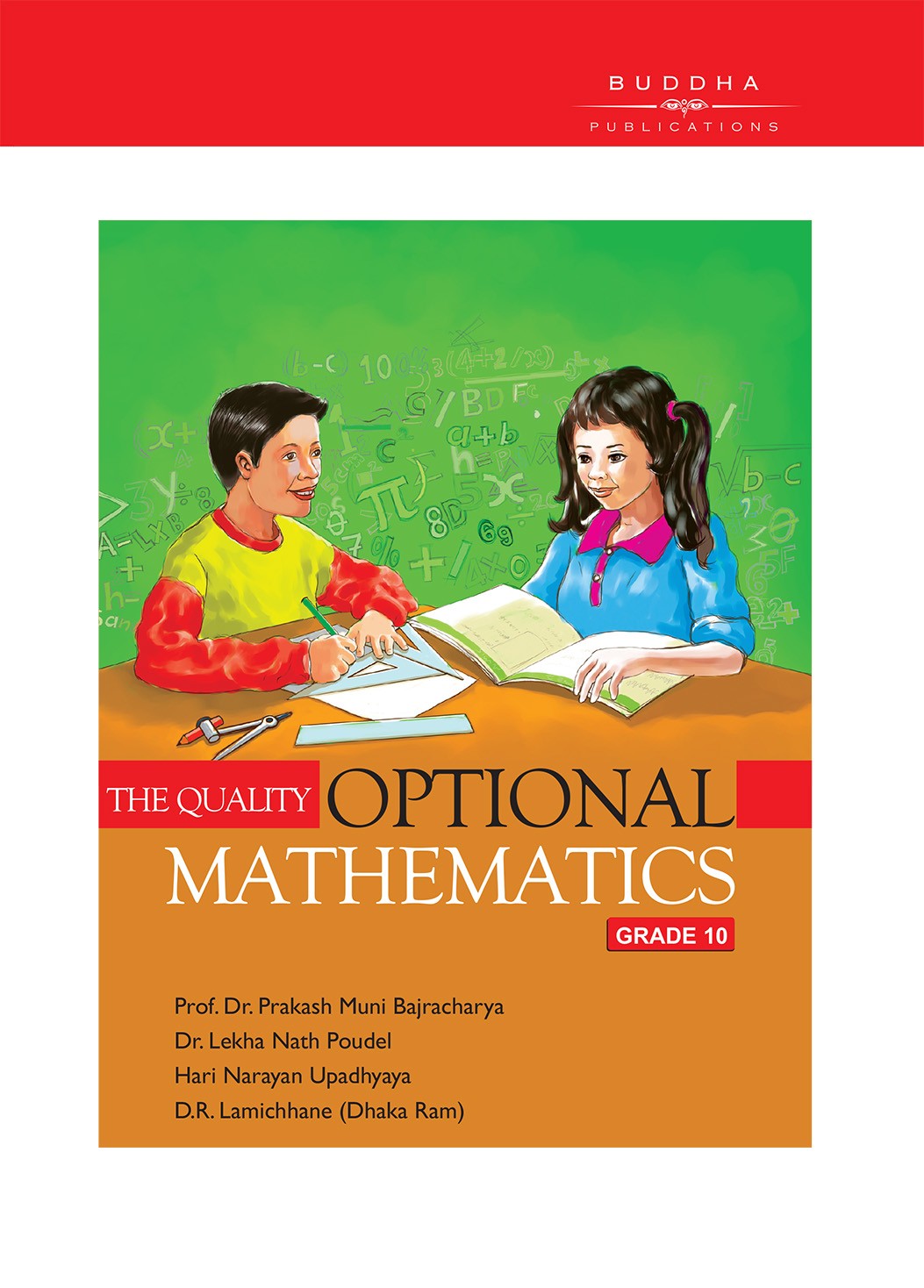
The Quality Optional Mathematics 10
Prof. Dr. Prakash Muni Bajracharya, Dr. Lekh Nath Poudel, Hari Narayan Upadhyaya & DR Lamichhane- ISBN: 9789937302678
- Version: English
- Price NRs. 445
- Published Year 2017
- Avaliablility: In stock
Optional mathematics for school students is designed to provide some background knowledge and understanding to those students who would like to pursue their advanced study in various scientific, social or technical fields. The prescribed curriculum of the Government of Nepal has included optional mathematics courses for grades nine and ten. However, there is a realization that some preliminary contents on optional mathematics should be taught so that the students will have acquired basic pre-requisite knowledge and will be ready to cope easily with the contents of optional mathematics in grades nine and ten. Realizing the need for beginners’ optional mathematics The Quality Optional Mathematics for Grade Seven has been developed as the book I for the beginners’ optional mathematics. There is a set of four optional mathematics books in this series of The Quality Optional Mathematics, the beginners’ optional mathematics books I and II are designed for grade seven and eight students respectively and the other two optional mathematics books for grades nine and ten students. The beginners’ optional mathematics book I is designed for Grade Seven students as the elementary pre-requisite for the further optional mathematics contents with the suggested teaching hours 2 or 3 period per week.
The books on The Quality Optional Mathematics are the result of our long term engagement in teaching of mathematics, conducting training, developing teachers and students support materials, developing books and conducting researches in mathematics. While developing these books the international development on mathematics education and the needs realized from the development of science and technology as well as needs and demands from the students and teachers have been considered, and therefore incorporated both the global practices and the local needs and interest in a balanced manner.
Each chapter of the book begins with the illustrative figure which could motivate students about the application of the contents of the chapter. The content summary presented in each chapter page and the objectives presented in each section may encourage student to identify clear path for learning. Each section of the book begins either with activity, games, discussion questions, examples or pictures so that students will be able to learn concepts and principles in a meaningful and interesting manner. As a result, students themselves identify and apply the rules, principles and generalization. In order to reinforce problem solving skills, varieties of worked out examples have been included. In most of the cases, exercises are graded into four hierarchical orders starting from Oral exercises for the immediate feedback to the lesson. Oral Questions are the pre-requisites for the questions in PART A, PART B, or PART C. Questions in PART A, PART B and PART C are arranged in orders of abstraction and difficulty level from simple to complex orders so that students should be completed previous part in order to move to the next.
In most of the cases, parallel questions have been provided to facilitate the practice of the students. Generally, questions in PART A and B are structure by targeting all the students and PART C could be worked out by those students who would like to go with challenging problems and try to attain more than 80 per cent achievement level. Each chapter ends with vocabulary review under the tile Terms Used in this Chapter, which will help students to review the chapter.